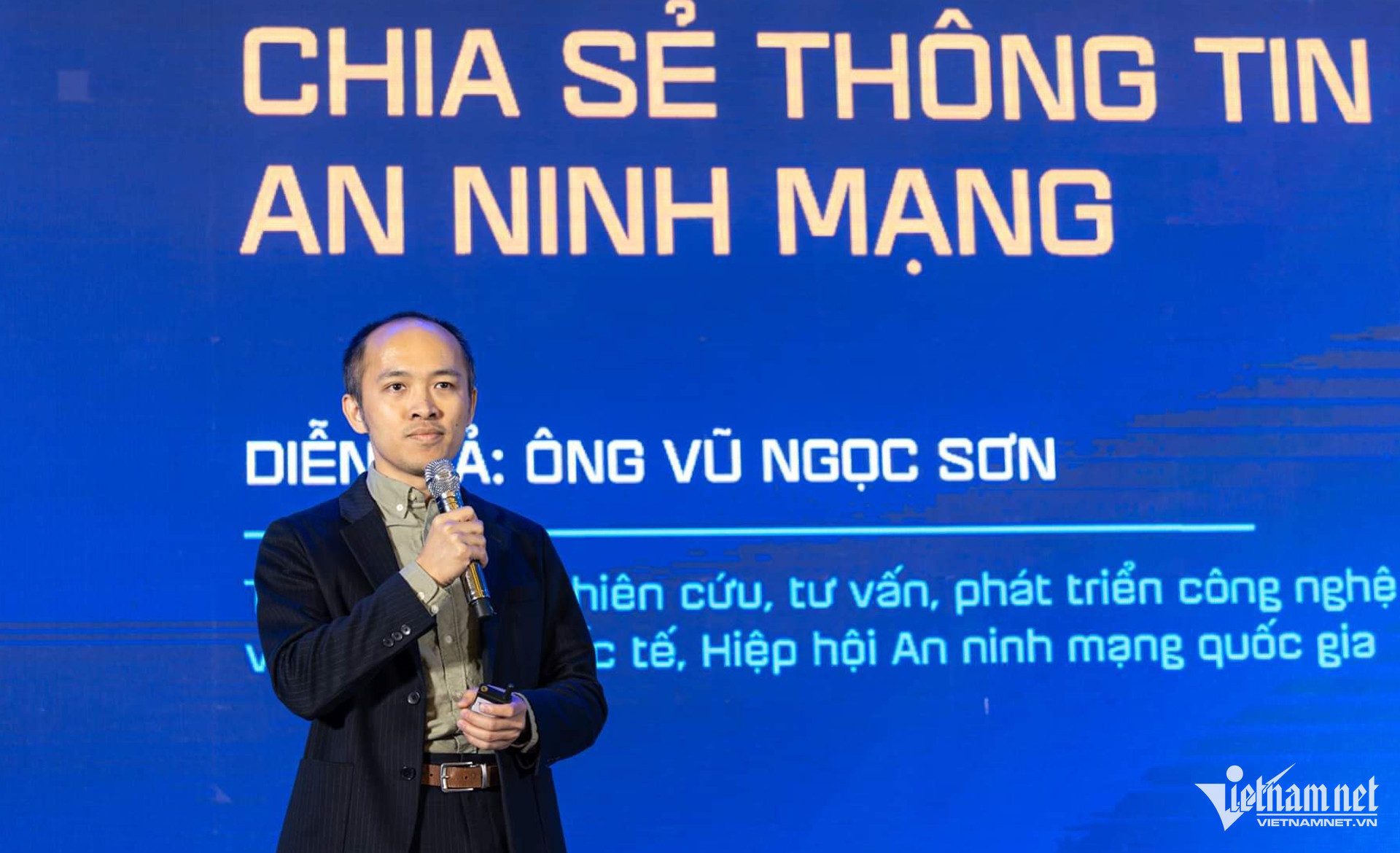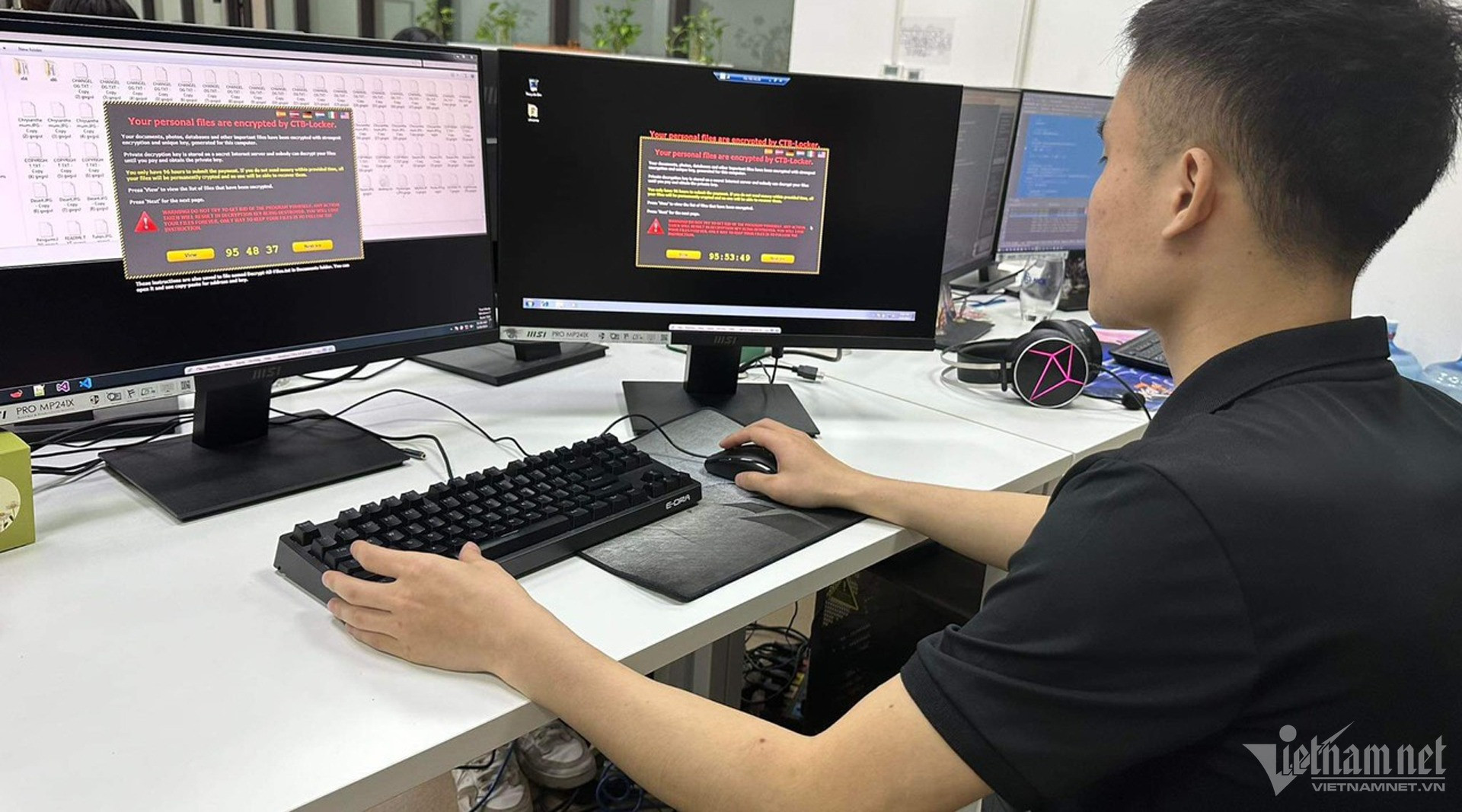
Expected to be officially launched and widely implemented by the end of March, Vietnam’s cyber threat intelligence sharing platform is anticipated to become a crucial tool in safeguarding IT systems and data against cyber threats.
Why is a cyber threat intelligence sharing platform needed?
The National Cybersecurity Association (NCA) initiated the development of this platform in the third quarter of 2024.
After progressing through key phases - including requirement analysis, infrastructure design, core function development, testing, and trial deployment with key partners - the platform is set for its official debut in late March 2025.
Speaking exclusively to VietNamNet, Vu Ngoc Son, head of technology at NCA, revealed that the idea for the platform arose when cybersecurity experts were repeatedly called upon to handle ransomware attacks in Vietnam in early 2024.
“At the time, the most common questions we received from colleagues and partners were: How did the hackers attack? What type of malware was used? What vulnerabilities were exploited? How can we patch them?” Son explained.
These concerns, raised by professionals responsible for protecting critical information systems, underscored the urgent need for a centralized intelligence-sharing platform.
From a technological standpoint, similar models exist globally, making the development of a Vietnamese platform feasible. While some organizations in Vietnam have attempted small-scale implementations, there has yet to be a comprehensive public-private intelligence-sharing model with commercially viable accessibility.
To bridge this gap, NCA engaged with key stakeholders - including the Department of Cybersecurity and High-Tech Crime Prevention (A05) under the Ministry of Public Security, leading cybersecurity firms, and international experts - to outline the platform’s three core principles:
Public-private collaboration in data sharing
High performance on minimal infrastructure
Affordable pricing to ensure accessibility
Recognizing that cybersecurity intelligence is highly valuable, NCA aims to negotiate with international security firms to acquire foreign threat intelligence data and distribute it to members.
This will allow organizations to access a consolidated database enriched with both global and domestic threat intelligence, enabling proactive incident response and early warnings about emerging cyber threats.
A tool to protect IT systems and data

NCA’s technology department emphasizes that the cyber intelligence platform will play a crucial role in strengthening cybersecurity defenses across Vietnam.
By fostering continuous cooperation and intelligence-sharing, the platform will help organizations stay ahead of cybercriminals and mitigate potential threats.
Specifically, the platform will:
Provide real-time alerts on emerging security threats, enabling organizations to implement timely protective measures
Address a major cybersecurity gap in Vietnam, where recent cyberattacks have exploited known vulnerabilities simply because organizations failed to update their security defenses
Enhance public-private sector collaboration, creating a cybersecurity network where regulatory agencies, cybersecurity firms, and experts work together to combat cybercrime
Under this model, regulatory agencies will contribute insights on ongoing cyber incidents in Vietnam, cybersecurity firms will provide advanced threat intelligence and malware analysis, and industry experts will share research on evolving attack strategies and defense mechanisms.
How organizations can contribute and benefit
The intelligence-sharing platform is designed as a collaborative ecosystem where members can contribute and receive valuable insights to strengthen their cybersecurity defenses.
Organizations can participate in various ways, including:
Financial contributions to support data acquisition and platform operations
Threat intelligence contributions, such as reports on security incidents and emerging threats
Technology contributions, sharing research on new cybersecurity techniques
Expert contributions, providing cybersecurity knowledge and strategic defense recommendations
In return, contributing members will receive standardized and deeply analyzed intelligence reports, enabling them to detect and respond to security risks more effectively.
Van Anh